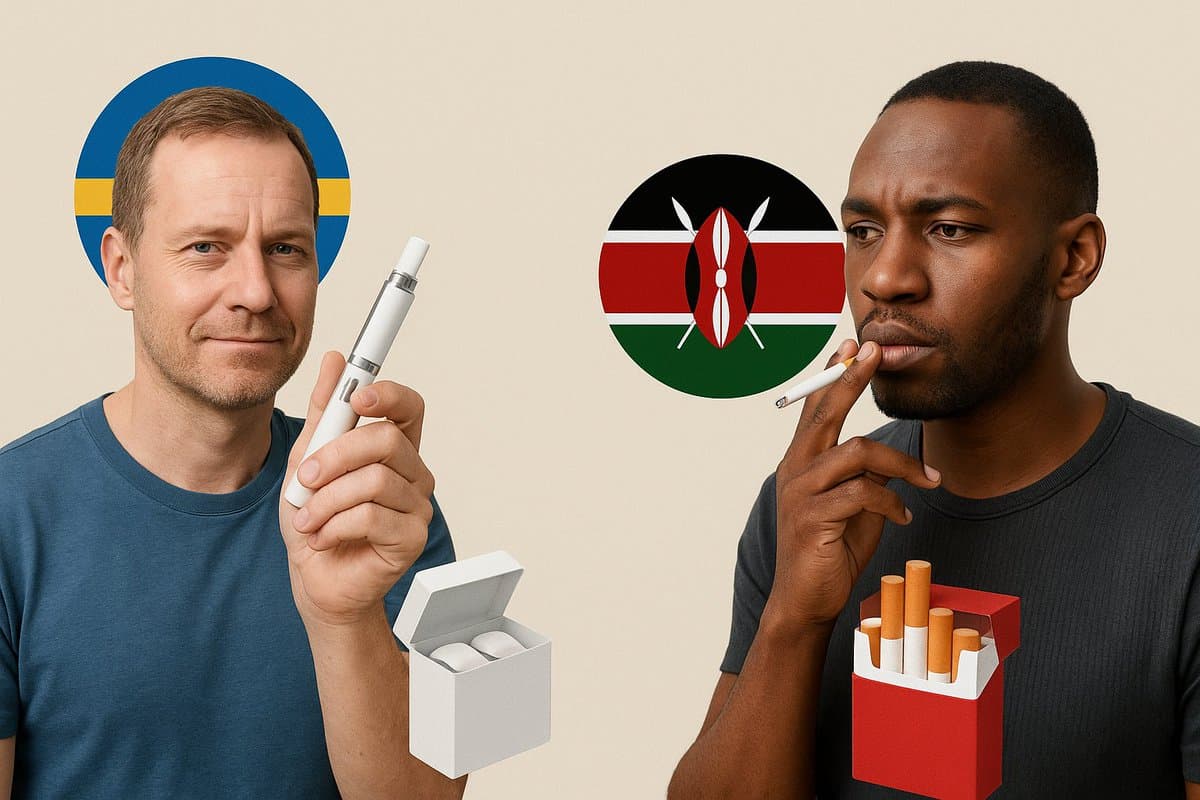Loading News Article...
We're loading the full news article for you. This includes the article content, images, author information, and related articles.
We're loading the full news article for you. This includes the article content, images, author information, and related articles.
Following a divisive global tobacco control conference, Kenya faces urgent policy decisions on whether to embrace science-backed harm reduction strategies or intensify existing prohibitions, a debate with profound public health and economic consequences for the nation.

NAIROBI – Thursday, November 27, 2025 (EAT) – The conclusion of the World Health Organization's (WHO) eleventh Conference of the Parties (COP11) to the Framework Convention on Tobacco Control (FCTC) in Geneva has amplified a critical public health debate across Africa, placing Kenya at a pivotal crossroads. The summit exposed deep divisions between nations advocating for strict, abstinence-only tobacco control and those championing tobacco harm reduction (THR)—a strategy focused on encouraging adult smokers who cannot or will not quit to switch to less harmful, non-combustible alternatives like e-cigarettes, heated tobacco products, and nicotine pouches. For Kenya, a nation grappling with a significant smoking burden and a burgeoning illicit market, the path forward carries weighty implications for its economy and the health of its citizens.
The debate is not academic. Tobacco use costs the Kenyan economy up to KSh 98 billion (US$756.22 million) annually, factoring in both direct healthcare expenses and indirect costs from lost productivity. A 2024 study published in *Tobacco Use Insights* revealed that for every dollar the tobacco industry contributes to the economy, Kenya loses between US$2.20 and US$3.00. The direct healthcare cost attributed to tobacco-related illnesses in 2022 alone was estimated at US$396.1 million (approx. KSh 53.4 billion). These diseases, including heart attacks, strokes, and cancers, place an immense strain on an already stretched healthcare system. According to WHO data from 2024, approximately 2.3 million Kenyan adults are current smokers, and tobacco use was responsible for 9,418 deaths in 2021.
Proponents of THR argue that the primary danger in cigarettes lies in the thousands of toxic chemicals released through combustion, not nicotine itself. They contend that providing safer, regulated alternatives is a pragmatic public health strategy. This approach is supported by evidence from countries like New Zealand, which saw its smoking rate decline from 16.4% to 6.8% after implementing pro-vaping policies. Despite this, the country was controversially given a "Dirty Ashtray" award by a WHO-aligned NGO network at COP11 for its harm reduction stance. The WHO has maintained a cautious, often prohibitive, position, warning of unknown long-term effects and the risk of youth uptake of novel nicotine products. This official stance heavily influenced the tone at COP11, where harm reduction was often framed as an industry tactic rather than a legitimate public health tool.
Kenya's current legal framework, the Tobacco Control Act of 2007, did not anticipate the rise of products like e-cigarettes and nicotine pouches. In response, the Ministry of Health has initiated processes to amend the law to cover these novel products. Recent regulatory moves in 2025 have already positioned Kenya as having some of the strictest rules for nicotine pouches in Africa, mandating graphic health warnings, excise tax stamps, and a total ban on advertising and flavors. This aligns with the WHO's broader recommendations for stringent regulation. However, critics argue that overly restrictive policies could stifle a promising off-ramp for smokers and fuel the black market. A survey by the Campaign for Safer Alternatives (CASA) found that 73% of Kenyans fear that outright bans will fuel illicit sales. This concern is significant, as the illicit cigarette trade already accounts for over one-third (37%) of the market in 2024, costing the government an estimated KSh 9 billion in lost tax revenue annually. Much of this illicit trade originates from neighboring countries like Uganda and Tanzania, where excise taxes are considerably lower.
Many public health advocates across the continent argue that Africa must develop its own science-based frameworks rather than adopting wholesale policies shaped by Western interests and funding. While smoking prevalence is declining in many parts of the world, population growth means the absolute number of smokers in Africa is projected to rise from 66 million in 2015 to 84 million by 2025. Dr. Kgosi Letlape, President of the Association of Medical Councils of Africa, has challenged African governments to adopt harm reduction, calling it a more transformative strategy than prohibition-based policies. The core of the argument is for regulation that protects youth while providing adult smokers with viable, less harmful alternatives—a balanced approach that acknowledges the complexities of nicotine addiction and consumer behavior. As Kenya moves to finalize its updated tobacco control legislation, the decisions made will set a precedent for the East Africa region and determine the public health trajectory for millions.
Keep the conversation in one place—threads here stay linked to the story and in the forums.
Other hot threads
E-sports and Gaming Community in Kenya
Active 6 months ago
Popular Recreational Activities Across Counties
Active 6 months ago
Investing in Youth Sports Development Programs
Active 6 months ago
The Role of Technology in Modern Agriculture (AgriTech)
Active 6 months ago